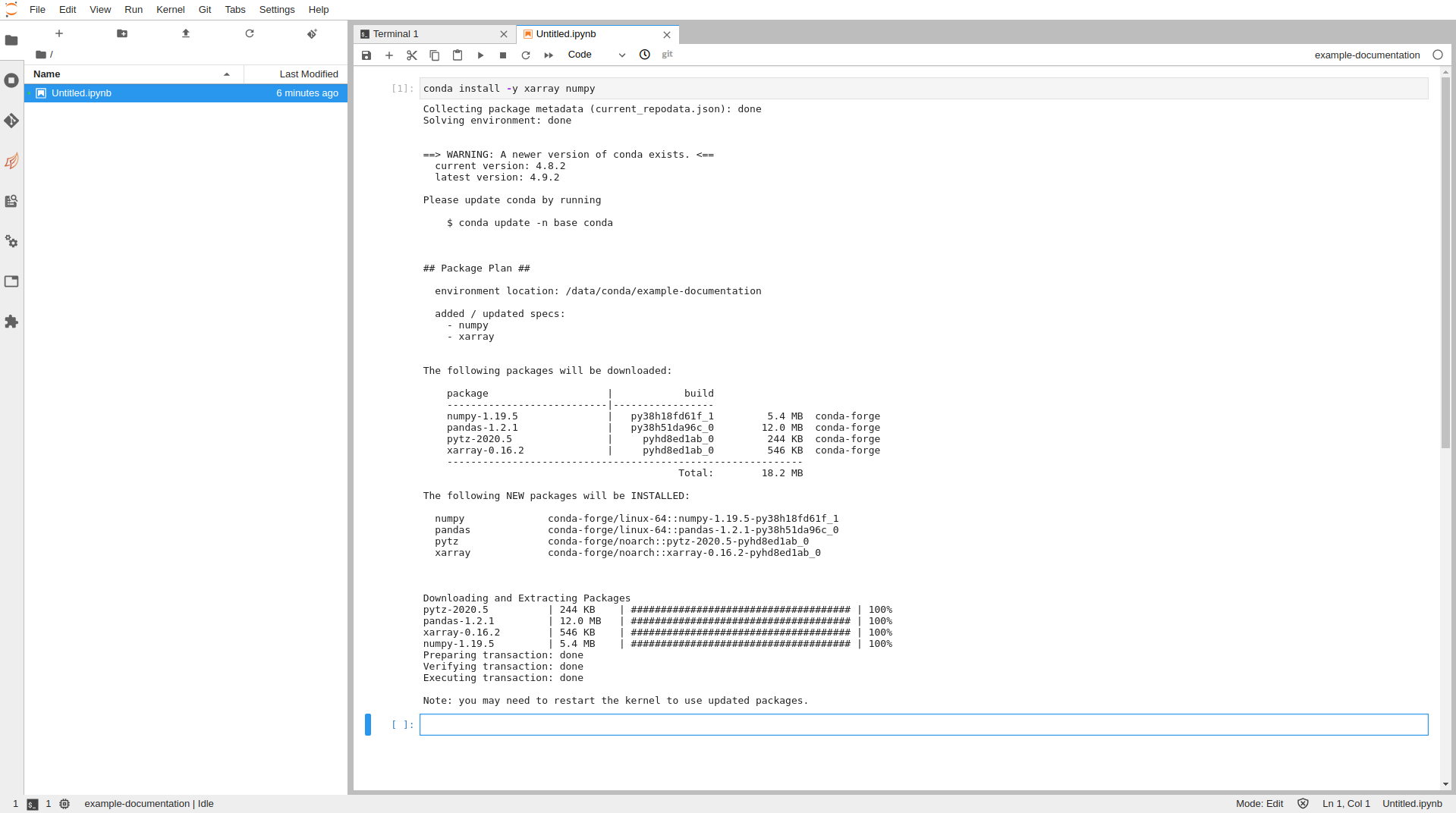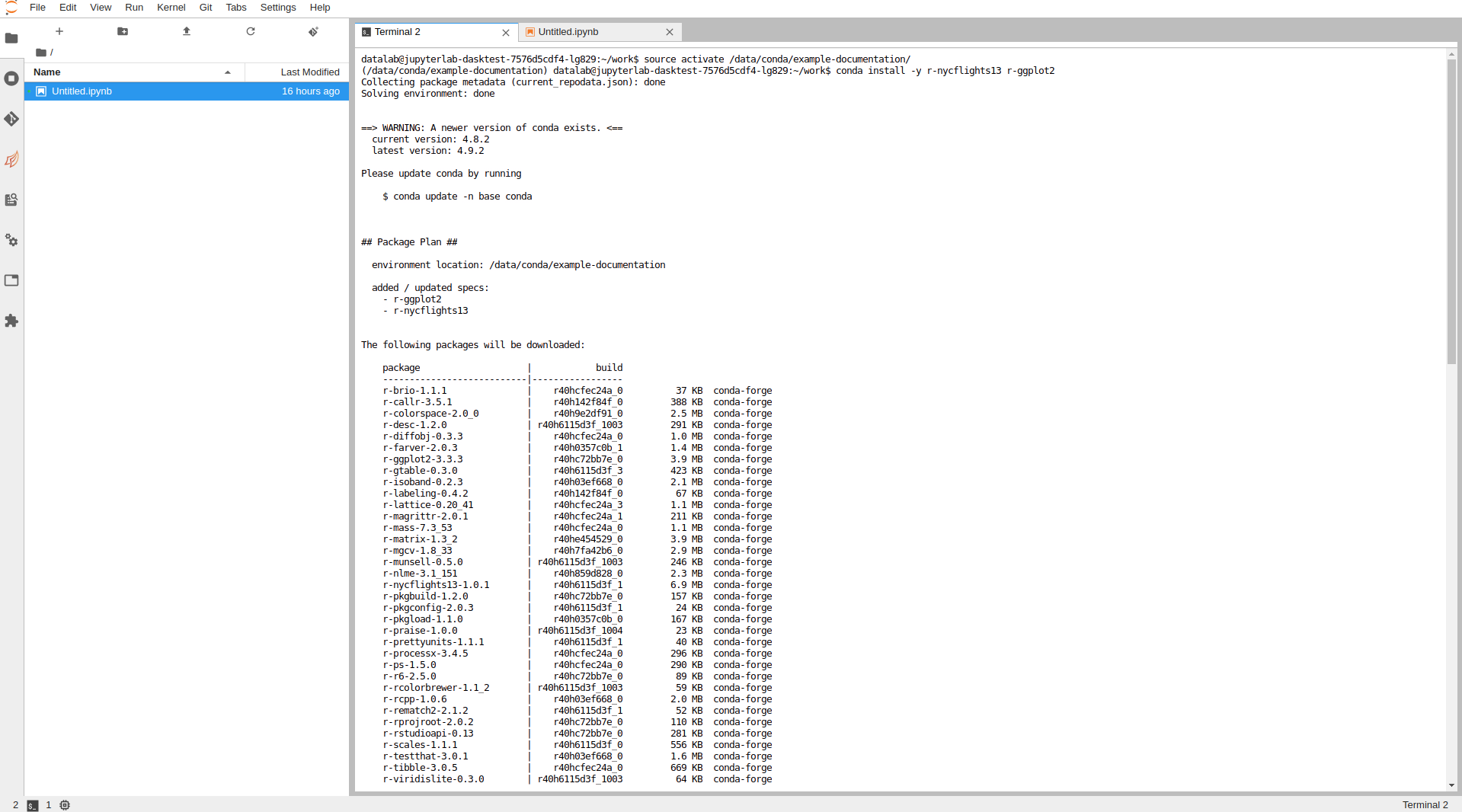2. Install packages
After creating a conda environment you can then begin installing the packages that you need to use.
There are multiple methods for installing packages in a Conda environment, but this tutorial will cover the most basic case for both Python and R. In each case we will install a few example packages which we will use later in an example.
Python
From the launcher screen for Jupyter, select the kernel associated with the environment you just created for Python. This will put you into a Python notebook where we will install a few standard packages which are common for data analysis.
conda install -y xarray numpy matplotlib pandas netcdf4

R
In the case of R conda packages can be installed from a Terminal session,
this method differs slightly to the standard way that R packages are installed (generally
using commands such as install.packages() from the console, which does also work in
most cases.) But this method has advantages as it can install system dependencies as
well. Note that when installing R packages from Conda you must prefix the package name
with r-.
source activate /data/conda/<environment_name>
conda install -y r-nycflight13 r-ggplot2
